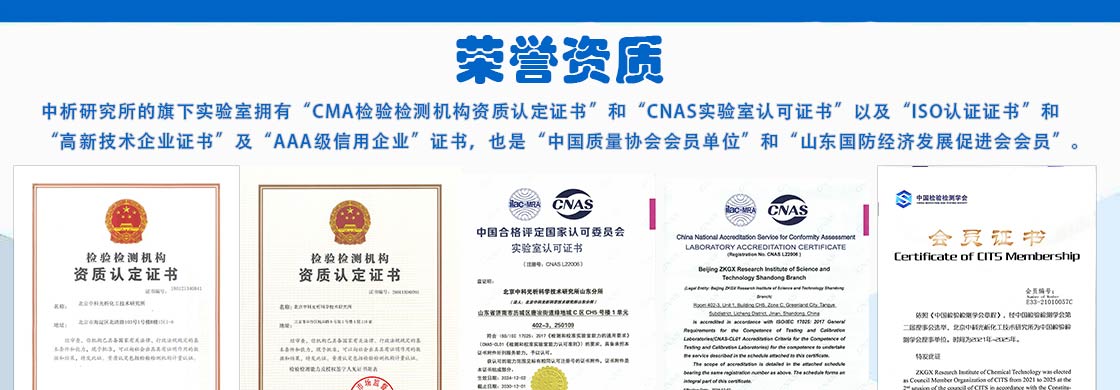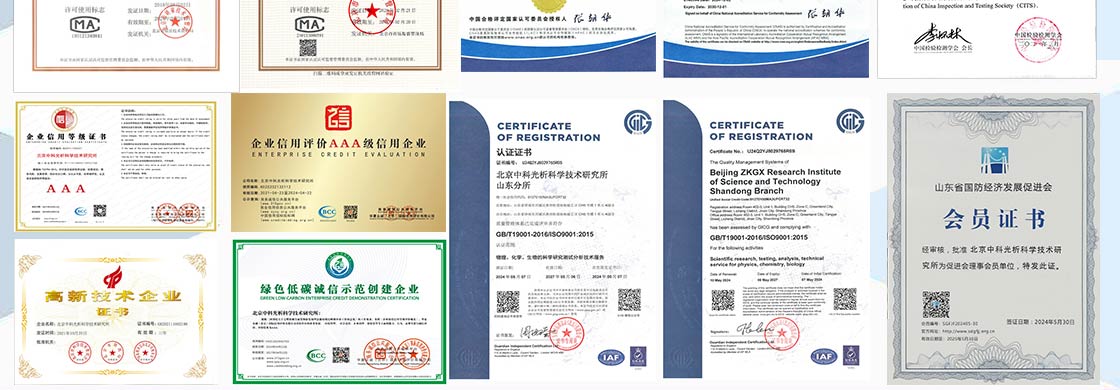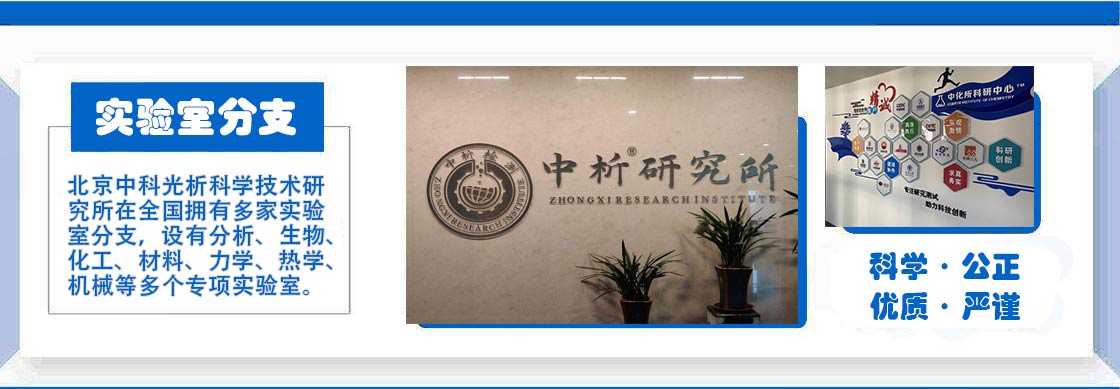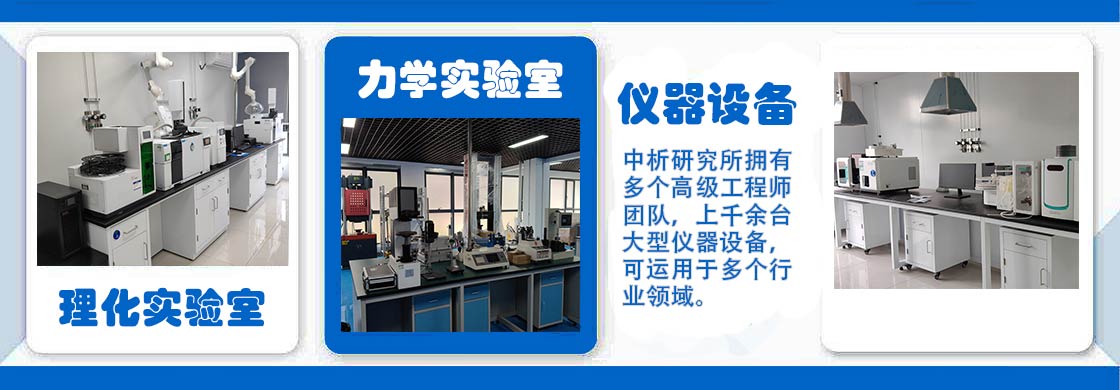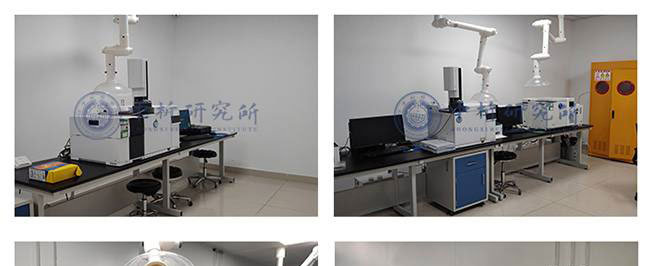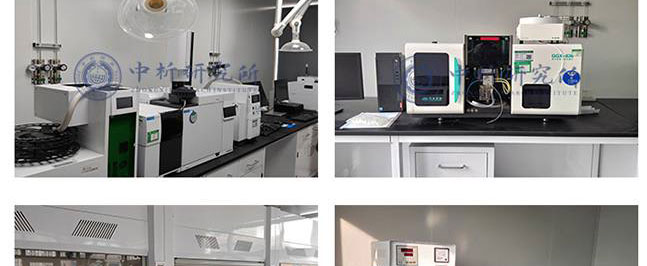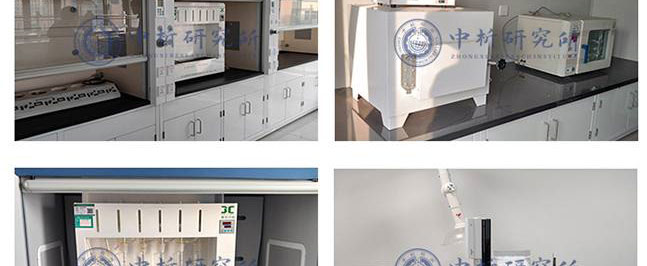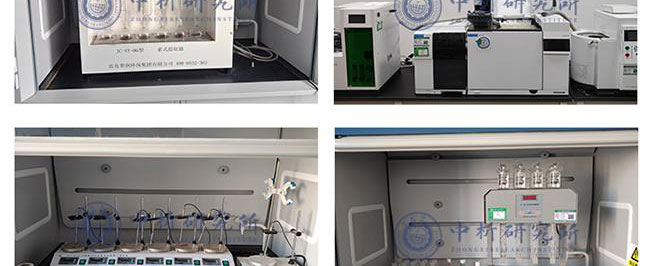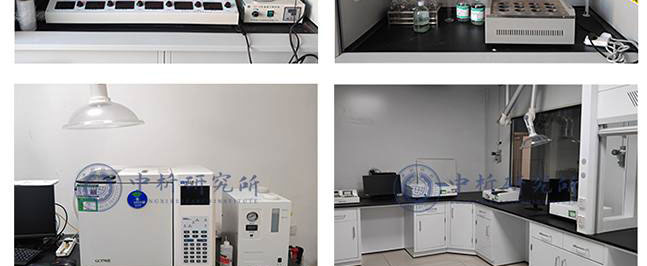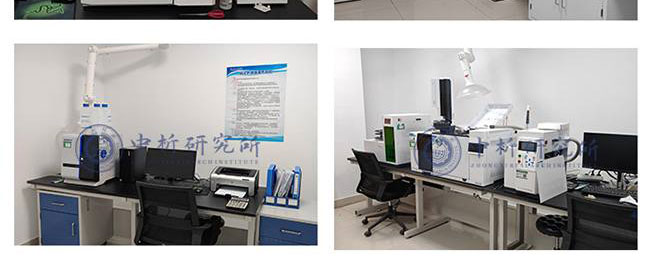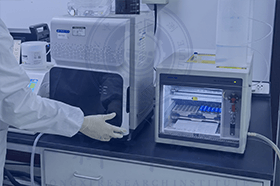国家标准 GB/T 17642-2008 土工合成材料 非织造布复合土工膜
【适用范围】本标准规定了非织造布复合土工膜的产品分类、规格、代号、技术要求及品质评定、试验方法、检验规则、包装、标志、贮运等。rn本标准适用于以非织造土工布为基材,以聚乙烯、聚氯乙烯等为膜材,复合而成的非织造布复合土工膜。
【中国标准分类】 W59 纺织制品 【国际标准分类】 59.080.70-土工布
国家标准 GB/T 17642-1998 土工合成材料 非织造复合土工膜
【适用范围】
【中国标准分类】 W59 纺织制品 【国际标准分类】 59.080.70-土工布
国家标准 GB/T 17643-2011 土工合成材料 聚乙烯土工膜
【适用范围】本标准规定了聚乙烯土工膜的术语和定义、基础树脂的要求、产品分类、代号与命名、要求、试验方法、检验规则及标志、包装、贮存和运输。本标准适用于以聚乙烯树脂、乙烯共聚物为原料 加入各类添加剂所生产的聚乙烯土工膜。
【中国标准分类】 G33 合成材料 【国际标准分类】 83.140.10-薄膜和薄板
国家标准 GB/T 17643-1998 土工合成材料 聚乙烯土工膜
【适用范围】 本标准规定了聚乙烯土工膜的分类和命名、技术要求、试验方法、检验规则、标志、包装、运输和贮存。 本标准适用于以聚乙烯树脂、乙烯共聚物为原料添加各类助剂所生产的聚乙烯土工膜。
【中国标准分类】 G33 合成材料 【国际标准分类】 83.140.10-薄膜和薄板
国家标准 GB/T 17688-1999 土工合成材料 聚氯乙烯土工膜
【适用范围】 本标准规定了聚氯乙烯土工膜的分类、命名、技术要求、试验方法、检验规则、标志、包装、运输、贮存。 本标准适用于以聚氯乙烯树脂为原料,加入增塑剂等助剂所生产的单层聚氯乙烯土工膜、双层聚氯乙烯复合土工膜及夹网聚氯乙烯复合土工膜。
【中国标准分类】 G33 合成材料 【国际标准分类】 83.140.10-薄膜和薄板
国家标准 GB/T 41794-2022 土工合成材料 聚烯烃土工膜耐应力开裂性能的评价 切口恒定拉伸负荷法
【适用范围】本文件规定了采用切口恒定拉伸负荷法评价聚烯烃土工膜(以下简称“土工膜”)耐应力开裂性能的测试方法。
本文件适用于以聚烯烃树脂为原料,加入各类添加剂所生产的土工膜耐应力开裂性能的评价。本文件也适用于聚烯烃土工膜专用树脂耐应力开裂性能的评价。
【中国标准分类】 G33 合成材料 【国际标准分类】 83.140.10-薄膜和薄板
行业标准 JB/T 13022-2017 塑料挤出吹塑土工膜辅机
【适用范围】本标准规定了塑料挤出吹塑土工膜辅机的术语和定义、型号、规格系列与基本参数、技术要求、试验方法、检验规则、标志、包装、运输和贮存。
本标准适用于以聚合物为基本原料来吹塑土工膜的塑料挤出吹塑土工膜辅机(以下简称辅机)。
【中国标准分类】 P53 化工机械于设备 【国际标准分类】 13.030.40-废物处置和处理设备与装置
行业标准 CJ/T 234-2006 垃圾填埋场用高密度聚乙烯土工膜
【适用范围】本标准规定了垃圾清理场用高密度聚乙烯土工膜的分类、要求、试验方法、测试频率、标志、标签、包装、运输和贮存等。n本标准适用于垃圾填埋场防渗、封场等工程中所使用,以中(高)密度聚乙烯树脂为主要原料,添加各类助剂所生产的高密度聚乙烯土工膜。
【中国标准分类】 P00 工程建设综合 【国际标准分类】 93.020-土方工程、挖掘、地基构造、地下工程
行业标准 CJ/T 276-2008 垃圾填埋场用线性低密度聚乙烯土工膜
【适用范围】本标准规定了垃圾填埋场用线性低密度聚乙烯(LLDPE)土工膜的分类、要求、试验方法、测试频率、标志、标签、包装、运输和贮存等。rn本标准适用于垃圾填埋场在终场覆盖、临时覆盖、中间覆盖等工程中所使用的线性低密度聚乙烯(LLDPE)土工膜。覆盖用的低密度聚乙烯(LDPE)土工膜可参照本标准。
【中国标准分类】 P53 城乡规划与市政工程 【国际标准分类】 91.040.99-其他建筑物
行业标准 NB/T 35027-2014 水电工程土工膜防渗技术规范
【适用范围】本规范适用于新建和加固改建的水电工程(含抽水蓄能工程)的永久性或临时性建筑物防渗。
【中国标准分类】 P59 水利、水电工程 【国际标准分类】 27.140-水力工程
行业标准 SH/T 1801-2016 土工膜用中密度聚乙烯树脂
【适用范围】本标准规定了土工膜用中密度聚乙烯树脂的要求、试验方法、检验规则、标志及包装、运输和贮存。n本标准适用于土工膜用中密度聚乙烯树脂。n注:土工膜是一种以高分子聚合物为基础原料生产的阻隔型材料。本标准适用的中密度聚乙烯树脂宜加入炭黑母粒n和/或抗氧母粒生产土工膜。n
【中国标准分类】 G32 合成材料 【国际标准分类】 83.080.20-热塑性塑料
行业标准 SL/T 231-1998 聚乙烯(PE)土工膜防渗工程技术规范(附条文说明)
【适用范围】本规范适用于以非加筋PE土工膜为防渗材料的水工建筑物、隧道或其他类型地下结构的防渗体、铺盖及固体废料填埋的衬护等防渗工程的设计、施工及验收。
【中国标准分类】 N93 工程结构 【国际标准分类】 07.060-地质学、气象学、水文学
行业标准 SL 408-2007 土工膜抗渗仪校验规程
【适用范围】本规程适用于土工膜耐静水压抗渗仪的首次校验、后续校验和使用中校验。
【中国标准分类】 N93 其他仪器仪表 【国际标准分类】 07.060-地质学、气象学、水文学
地方标准 DB61/T 531-2011 土工膜复合半圆排水管通用技术条件
【适用范围】陕西省地方标准;------本标准适用于土工膜复合半圆排水管和其它包覆材料的半圆形排水管。
【中国标准分类】 W13 棉纺织 【国际标准分类】 59.080.70-土工布
地方标准 DB63/T 1802-2020 测定内增强土工膜撕裂强度的试验方法
【适用范围】1.1 This test method covers a uniform procedure for determining the tear strength of flexible geomembranes internally reinforced with a textile using the tongue tear method. 1.2 The values stated in either SI units or inch-pound units are to be regarded separately as standard. The values stated in each system may not be exact equivalents; therefore each system shall be used independently of the other. Combining values from the two systems may result in non-conformance with the standard. 1.3 This standard does not purport to address all of the safety concerns if any associated with its use. It is the responsibility of the user of this standard to establish appropriate safety and health practices and determine the applicability of regulatory limitations prior to use.
【中国标准分类】 W59 纺织制品 【国际标准分类】 59.080.70-土工布
国外标准 ASTM D6214/D6214M-1998(2013)e1 用化学溶解法测定接合土工膜用现场接缝完整性的试验方法
【适用范围】
Significance8212; The increased use of geomembranes as barrier materials to restrict fluid migration from one location to another in various applications and the various types of seaming methods used in joining geomembrane sheets has created a need to standardize tests by which the various seams can be compared and the quality of the seam systems can be evaluated. This test method is intended to meet such a need.
Use8212;Accelerated seam test provides information as to the status of the field seam. Data obtained by this test method should be used with site-specific contract plans specification and CQC/CQA documents. This test method is useful for specification testing and for comparative purposes but does not necessarily measure the ultimate strength that the seam may acquire.
1.1 This test method covers an accelerated destructive test method for geomembranes in a geotechnical application.
1.2 This test is applicable to field fabricated geomembranes that are scrim reinforced or non reinforced.
1.3 This test method is applicable for field seaming processes that use a chemical fusion agent or bodied chemical fusion agent as the seaming mechanism.
1.4 Subsequent decisions as to seam acceptance criteria are made according to the site-specific contract plans specification and CQC/CQA documents.
1.5 The values stated in both inch-pound and SI units are to be regarded separately as the standard. The values given in parentheses are for information only.
1.6 Hazardous Materials8212;Always consult the proper Material Safety Data Sheets for any Hazardous materials used for proper ventilation and protection. The use of the oven in this test method may accelerate fume production from the test specimen.
1.7 This standard does not purport to address all of the safety concerns if any associated with its use. It is the responsibility of the user of this standard to establish appropriate safety and health practices and determine the applicable of regulatory limitations prior to use.
【中国标准分类】 G33 合成材料 【国际标准分类】 83.140.10-薄膜和薄板
国外标准 ASTM D6365-1999 使用火花试验对土工膜缝的非破坏性试验的标准操作规程
【适用范围】
1.1 This practice describes the nondestructive testing of field seams in geomembranes using the spark test. A suspect area is indicated by the generation of a spark. The test is applicable to seams made by the extrusion method seams made by using welding tape (a strip of the same type of material as the geomembrane that is welded over adjacent sections of geomembrane to create a seam) or seams where it is practical to insert a conductive material in the seam just prior to or during fabrication.
1.2 The spark test may produce an electrical spark and therefore can only be used where an electrical spark would not create a hazard.
1.3 Unless the voltages and distances prescribed are carefully adhered to a "false positive" indication may result. This false positive occurs when the arc distance is too large for the voltage applied at the time and conditions of testing.
1.4 This standard does not purport to address all of the safety concerns if any associated with its use. It is the responsibility of the user of this standard to establish appropriate safety and health practices and determine the applicability of regulatory limitations prior to use.
【中国标准分类】 W59 纺织制品 【国际标准分类】 59.080.70-土工布
国外标准 ASTM D7006-2003(2008) 土工膜超声测试规程
【适用范围】
This practice covers test arrangements measurement techniques sampling methods and calculations to be used for nondestructive evaluation of geomembranes using ultrasonic testing.
Wave velocity may be established for particular geomembranes (for specific polymer type specific formulation specific density). Relationships may be established between velocity and both density and tensile properties of geomembranes. An example of the use of ultrasound for determining density of polyethylene is presented in Test Method D 4883. Velocity measurements may be used to determine thickness of geomembranes (1 2). Travel time and amplitude of transmitted waves may be used to assess the condition of geomembranes and to identify defects in geomembranes including surface defects (for example scratches cuts) inner defects (for example discontinuities within geomembranes) and defects that penetrate the entire thickness of geomembranes (for example pinholes) (3 4). Bonding between geomembrane sheets can be evaluated using travel time velocity or impedance measurements for seam assessment (5-10). Examples of the use of ultrasonic testing for determining the integrity of field and factory seams through travel time and velocity measurements (resulting in thickness measurements) are presented in Practices D 4437 and D 4545 respectively. An ultrasonic testing device is routinely used for evaluating seams in prefabricated bituminous geomembranes in the field (11). Integrity of geomembranes may be monitored in time using ultrasonic measurements.
Note 18212;Differences may exist between ultrasonic measurements and measurements made using other methods due to differences in test conditions such as pressure applied and probe dimensions. An example is ultrasonic and mechanical thickness measurements.
The method is applicable to testing both in the laboratory and in the field for parent material and seams. The test durations are very short as wave transmission through geomembranes occurs within microseconds.
1.1 This practice provides a summary of equipment and procedures for ultrasonic testing of geomembranes using the pulse echo method.
1.2 Ultrasonic wave propagation in solid materials is correlated to physical and mechanical properties and condition of the materials. In ultrasonic testing two wave propagation characteristics are commonly determined: velocity (based on wave travel time measurements) and attenuation (based on wave amplitude measurements). Velocity of wave propagation is used to determine thickness density and elastic properties of materials. Attenuation of waves in solid materials is used to determine microstructural properties of the materials. In addition frequency characteristics of waves are analyzed to investigate the properties of a test material. Travel time amplitude and frequency distribution measurements are used to assess the condition of materials to identify damage and defects in solid materials. Ultrasonic measurements are used to determine the nature of materials/media in contact with a test specimen as well. Measurements are conducted in the time-domain (time versus amplitude) or frequency-domain (frequency versus amplitude).
1.3 Measurements of one or more ultrasonic wave transmission characteristics are made based on the requirements of the specific testing program.
1.4 This standard does not purport to address all of the safety concerns if any associated with its use. It is the responsibility of the user of this standard to establish appropriate safety and health practices and determine the applicability of regulatory limitations prior to use.
【中国标准分类】 G33 合成材料 【国际标准分类】 59.080.70-土工布
国外标准 ASTM D7006-2003(2013) 覆有水或土材料的土工膜泄漏定位的电工法规程
【适用范围】1.1 These practices cover standard procedures for using electrical methods to locate leaks in geomembranes covered with water or earthen materials. For clarity this practice uses the term “leak” to mean holes punctures tears knife cuts seam defects cracks and similar breaches in an installed geomembrane (as defined in 3.2.5). 1.2 These practices are intended to ensure that leak location surveys are performed with demonstrated leak detection capability. To allow further innovations and because various leak location practitioners use a wide variety of procedures and equipment to perform these surveys performance-based operations are used that specify the minimum leak detection performance for the equipment and procedures. 1.3 These practices require that the leak location equipment procedures and survey parameters used are demonstrated to result in an established minimum leak detection distance. The survey shall then be conducted using the demonstrated equipment procedures and survey parameters. 1.4 Separate procedures are given for leak location surveys for geomembranes covered with water and for geomembranes covered with earthen materials. Separate procedures are given for leak detection distance tests using actual and artificial leaks. 1.5 Examples of methods of data analysis for soil-covered surveys are provided as guidance in Appendix X1. 1.6 Leak location surveys can be used on geomembranes installed in basins ponds tanks ore and waste pads landfill cells landfill caps and other containment facilities. The procedures are applicable for geomembranes made of materials such as polyethylene polypropylene polyvinyl chloride chlorosulfonated polyethylene bituminous material and other electrically-insulating materials. 1.7 The values stated in SI units are to be regarded as standard. No other units of measurement are included in this standard. 1.8 (Warning—The el
【中国标准分类】 G33 合成材料 【国际标准分类】 59.080.70-土工布
国外标准 ASTM D7007-2015 覆有水或土材料的土工膜泄漏定位的电工法规程
【适用范围】1.1 These practices cover standard procedures for using electrical methods to locate leaks in geomembranes covered with water or earthen materials. For clarity this practice uses the term “leak” to mean holes punctures tears knife cuts seam defects cracks and similar breaches in an installed geomembrane (as defined in 3.2.5). 1.2 These practices are intended to ensure that leak location surveys are performed with demonstrated leak detection capability. To allow further innovations and because various leak location practitioners use a wide variety of procedures and equipment to perform these surveys performance-based operations are used that specify the minimum leak detection performance for the equipment and procedures. 1.3 These practices require that the leak location equipment procedures and survey parameters used are demonstrated to result in an established minimum leak detection distance. The survey shall then be conducted using the demonstrated equipment procedures and survey parameters. 1.4 Separate procedures are given for leak location surveys for geomembranes covered with water and for geomembranes covered with earthen materials. Separate procedures are given for leak detection distance tests using actual and artificial leaks. 1.5 Examples of methods of data analysis for soil-covered surveys are provided as guidance in Appendix X1. 1.6 Leak location surveys can be used on geomembranes installed in basins ponds tanks ore and waste pads landfill cells landfill caps and other containment facilities. The procedures are applicable for geomembranes made of materials such as polyethylene polypropylene polyvinyl chloride chlorosulfonated polyethylene bituminous material and other electrically-insulating materials. 1.7 The values stated in SI units are to be regarded as standard. No other units of measurement are included in this standard. 1.8 (Warning—The el
【中国标准分类】 G33 合成材料 【国际标准分类】 59.080.70-土工布
国外标准 ASTM D7007-2009 覆有水或土材料的土工膜泄漏定位的电工法规程
【适用范围】
Geomembranes are used as impermeable barriers to prevent liquids from leaking from landfills ponds and other containments. The liquids may contain contaminants that if released can cause damage to the environment. Leaking liquids can erode the subgrade causing further damage. Leakage can result in product loss or otherwise prevent the installation from performing its intended containment purpose. For these reasons it is desirable that the geomembrane have as little leakage as practical.
Geomembrane leaks can be caused by poor quality of the subgrade poor quality of the material placed on the geomembrane accidents poor workmanship and carelessness.
The most significant causes of leaks in geomembranes that are covered with only water are related to construction activities including pumps and equipment placed on the geomembrane accidental punctures and punctures caused by traffic over rocks or debris on the geomembrane or in the subgrade.
The most significant cause of leaks in geomembranes covered with earth materials is construction damage caused by machinery that occurs while placing the earth material on the geomembrane. Such damage also can breach additional layers of the lining system such as geosynthetic clay liners.
Electrical leak location methods are an effective final quality assurance measure to locate previously undetected or missed leaks.
1.1 These practices describe standard procedures for using electrical methods to locate leaks in geomembranes covered with water or earth materials containing moisture.
1.2 These practices are intended to ensure that leak location surveys are performed with demonstrated leak detection capability. To allow further innovations and because various leak location practitioners use a wide variety of procedures and equipment to perform these surveys performance-based operations are used that specify the minimum leak detection performance for the equipment and procedures.
1.3 These practices require that the leak location equipment procedures and survey parameters used are demonstrated to result in an established minimum leak detection sensitivity. The survey shall then be conducted using the demonstrated equipment procedures and survey parameters.
1.4 Separate procedures are given for leak location surveys for geomembranes covered with water and for geomembranes covered with earth materials. Separate procedures are given for leak detection sensitivity tests using actual and artificial leaks.
1.5 Leak location surveys can be used on geomembranes installed in basins ponds tanks ore and waste pads landfill cells landfill caps and other containment facilities. The procedures are applicable for geomembranes made of materials such as polyethylene polypropylene polyvinyl chloride chlorosulfonated polyethylene bituminous material and other electrically-insulating materials.
1.6 The values stated in SI units are to be regarded as standard. No other units of measurement are included in this standard.
1.7 Warningx2014;The electrical methods used for geomembrane leak location could use high voltages resulting in the potential for electrical shock or electrocution. This hazard might be increased because operations might be conducted in or near water. In particular a high voltage could exist between the water or earth material and earth ground or any grounded conductor. These procedures are potentially VERY DANGEROUS and can result in personal injury or death. The electrical methods used for geomembrane leak location should be attempted only by qualified and experienced personnel. Appropriate safety measures must be taken to protect the leak location operators as well as other people at the site.
1.8 This standa......
【中国标准分类】 G33 合成材料 【国际标准分类】 59.080.70-土工布
国外标准 ASTM D7106-2005 乙烯丙烯二烯单体(EPDM)土工膜的试验方法
【适用范围】1.1 This standard guide provides recommendations for the selection of appropriate test methods for Ethylene Propylene Diene Terpolymer (EPDM) geomembranes used in geotechnical and geoenvironmental applications.1.2 This guide includes test methods for three different types of EPDM geomembranes including; scrim-reinforced membranes composite membranes and smooth non-reinforced membranes.1.3 The test methods are divided into three categories including manufacturing quality control optional performance tests and seam testing.1.4 The values stated in SI units are to be regarded as the standard. The values given in parentheses are provided for information purposes only.1.5 This standard does not purport to address all of the safety problems if any associated with its use. It is the responsibility of the user of this standard to establish appropriate safety and health practices and determine the applicability of regulatory limitations prior to use.
【中国标准分类】 G31 合成材料 【国际标准分类】 59.080.70-土工布
国外标准 ASTM D7106/D7106M-2005(2015)e1 乙烯丙烯二烯三元共聚物(EPDM)土工膜试验方法选择指南
【适用范围】1.1 This guide covers and provides recommendations for the selection of appropriate test methods for Ethylene Propylene Diene Terpolymer (EPDM) geomembranes used in geotechnical and geoenvironmental applications. 1.2 This guide includes test methods for three different types of EPDM geomembranes including; scrim-reinforced membranes composite membranes and smooth non-reinforced membranes. 1.3 The test methods are divided into three categories including manufacturing quality control optional performance tests and seam testing. 1.4 The values stated in either SI units or inch-pound units are to be regarded separately as standard. The values stated in each system may not be exact equivalents; therefore each system shall be used independently of the other. Combining values from the two systems may result in non-conformance with the standard. 1.5 This standard does not purport to address all of the safety problems if any associated with its use. It is the responsibility of the user of this standard to establish appropriate safety and health practices and determine the applicability of regulatory limitations prior to use.
【中国标准分类】 W59 纺织制品 【国际标准分类】 59.080.70-土工布
国外标准 ASTM D7106-2005(2010) 乙烯丙烯二烯三元共聚物(EPDM)土工膜的试验方法
【适用范围】
This standard provides guidance to obtain data that is the most representative of the materialx2019;s characteristics and performance. To properly evaluate EPDM tests should be performed in accordance with specific test methods and procedures.
1.1 This guide covers and provides recommendations for the selection of appropriate test methods for Ethylene Propylene Diene Terpolymer (EPDM) geomembranes used in geotechnical and geoenvironmental applications.
1.2 This guide includes test methods for three different types of EPDM geomembranes including; scrim-reinforced membranes composite membranes and smooth non-reinforced membranes.
1.3 The test methods are divided into three categories including manufacturing quality control optional performance tests and seam testing.
1.4 The values stated in SI units are to be regarded as the standard. The values given in parentheses are provided for information purposes only.
1.5 This standard does not purport to address all of the safety problems if any associated with its use. It is the responsibility of the user of this standard to establish appropriate safety and health practices and determine the applicability of regulatory limitations prior to use.
【中国标准分类】 G33 合成材料 【国际标准分类】 59.080.70-土工布
国外标准 ASTM D7238-2006 使用荧光紫外线冷凝设备测量未增强聚烯烃土工膜受曝露影响的试验方法
【适用范围】
The use of this apparatus is intended to induce property changes associated with the end use conditions including the effects of the UV portion of sunlight moisture and heat. Exposures are not intended to simulate the deterioration caused by localized weather phenomena such as atmospheric pollution biological attack and saltwater exposure.
Note 38212;Refer to Practice G 151 for cautionary guidance applicable to laboratory weathering devices.
Variation in results may be expected when operating conditions are varied within the accepted limits of this method.
Test data for one thickness of a geomembrane can not be used as data for other thickness geomembranes made with the same formula (polymer pigment and stabilizers) since the degradation is thickness related.
Note 48212;It is recommended that a similar material of known performance (a control) be exposed simultaneously with the test material to provide a standard for comparative purposes. When control material is used in the test program it is recommended only one coupon be used for each UV exposure period to allow for OIT testing.
1.1 This standard covers the specific procedures and test conditions that are applicable for exposure of unreinforced polyolefin geomembranes to fluorescent UV radiation and condensation.
Note 1
Polyolefin geomembranes include high density polyethylene (HDPE) linear low density polyethylene (LLDPE) flexible polyproplyene (fPP) etc.
1.2 Test specimens are exposed to fluorescent UVA 340 lamps under controlled environmental conditions. UVA 340 lamps are standard for this method.
Note 2
Other types of fluorescent UV lamps such as UVB-313 can also be used based upon discussion between involved parties. However if the test is ran with another type of fluorescent UV lamps such as UVB-313 this should be considered as a deviation from the standard and clearly stated in the test report. UVB-313 and UVA-340 fluorescent lamps generate different amount of radiant power in different wavelength ranges; thus the photochemical effects caused by these different lamps may vary.
1.3 This method covers the conditions under which the exposure is to be performed and the test methods for evaluating the effects of fluorescent UV heat and moisture in the form of condensation on geomembranes. General guidance is given in Practices G 151 and G 154.
1.4 The values listed in SI units are to be regarded as the standard.
This standard does not purport to address all of the safety concerns if any associated with its use. It is the responsibility of the user of this standard to establish appropriate safety and health practices and determine the applicability of regulatory limitations prior to use.
【中国标准分类】 W59 纺织制品 【国际标准分类】 59.080.70-土工布
国外标准 ASTM D7466-2010 测量有织纹土工膜粗糙高度的试验方法
【适用范围】
The asperity height is an index property used to quantify one of the physical attributes related to the surface roughness of textured geomembranes.
This test method is applicable to all currently available textured geomembranes that are deployed as manufactured geomembrane sheets.
1.1 This test method covers a procedure to measure the asperity height of textured geomembranes.
1.2 This test method does not provide for measurement of the spacing between the asperities nor of the complete profile of the textured surface.
1.3 This standard does not purport to address all of the safety concerns if any associated with its use. It is the responsibility of the user of this standard to establish appropriate safety and health practices and determine the applicability of regulatory limitations prior to use.
【中国标准分类】 W59 纺织制品 【国际标准分类】 59.080.70-土工布
国外标准 ASTM D7466/D7466M-2010(2015)e1 测量有织纹土工膜粗糙度的试验方法
【适用范围】1.1 This test method covers a procedure to measure the asperity height of textured geomembranes. 1.2 This test method does not provide for measurement of the spacing between the asperities nor of the complete profile of the textured surface. 1.3 The values stated in either SI units or inch-pound units are to be regarded separately as standard. The values stated in each system may not be exact equivalents; therefore each system shall be used independently of the other. Combining values from the two systems may result in non-conformance with the standard. 1.4 This standard does not purport to address all of the safety concerns if any associated with its use. It is the responsibility of the user of this standard to establish appropriate safety and health practices and determine the applicability of regulatory limitations prior to use.
【中国标准分类】 W59 纺织制品 【国际标准分类】 59.080.70-土工布
国外标准 ASTM D7700-2015 土工膜缝试验方法选择指南
【适用范围】1.1 This guide is intended for use as a summary of test methods necessary to evaluate geomembrane seams. It is intended to guide geomembrane users toward the appropriate evaluation techniques to assess geomembrane seam quality. 1.2 Geomembrane seams covered by this guide are: high-density polyethylene (HDPE) linear low-density polyethylene (LLDPE) very low-density polyethylene (VLDPE) flexible polypropylene (fPP) polyvinyl chloride (PVC) ethylene propylene diene terpolymer (EPDM) prefabricated bituminous geomembranes (PBGM) Ethylene Interpolymer Alloy (EIA) and reinforced geomembranes 1.3 Although a significant effort has been made to gather all types of geomembranes and related evaluation techniques which were on the market at the date of completion of this document some available materials and technologies may have been omitted. The information presented in this document shall thus be considered to be non exhaustive. 1.4 The values stated in SI units are to be regarded as standard. No other units of measurement are included in this standard. 1.5 This standard does not purport to address all of the safety concerns if any associated with its use. It is the responsibility of the user of this standard to establish appropriate safety and health practices and determine the applicability of regulatory limitations prior to use.
【中国标准分类】 Q04 建材综合 【国际标准分类】 59.080.70-土工布
国外标准 ASTM D7703-2016 用水枪装置检测外露土工膜漏电位置的规程
【适用范围】1.1 This practice is a performance-based standard for an electrical method for locating leaks in exposed geomembranes. For clarity this practice uses the term “leak” to mean holes punctures tears knife cuts seam defects cracks and similar breaches in an installed geomembrane (as defined in 3.2.5). 1.2 This practice can be used for geomembranes installed in basins ponds tanks ore and waste pads landfill cells landfill caps canals and other containment facilities. It is applicable for geomembranes made of materials such as polyethylene polypropylene polyvinyl chloride chlorosulfonated polyethylene bituminous geomembrane and any other electrically insulating materials. This practice is best applicable for locating geomembrane leaks where the proper preparations have been made during the construction of the facility. 1.3 The values stated in SI units are to be regarded as standard. No other units of measurement are included in this standard. 1.4 This standard does not purport to address all of the safety concerns if any associated with its use. It is the responsibility of the user of this standard to establish appropriate safety and health practices and determine the applicability of regulatory limitations prior to use.
【中国标准分类】 W59 纺织制品 【国际标准分类】 91.100.50-粘合料、密封材料
国外标准 ASTM D7703-2015 用水枪装置检测外露土工膜漏电位置的规程
【适用范围】1.1 This practice is a performance-based standard for an electrical method for locating leaks in exposed geomembranes. For clarity this practice uses the term “leak” to mean holes punctures tears knife cuts seam defects cracks and similar breaches in an installed geomembrane (as defined in 3.2.5). 1.2 This practice can be used for geomembranes installed in basins ponds tanks ore and waste pads landfill cells landfill caps canals and other containment facilities. It is applicable for geomembranes made of materials such as polyethylene polypropylene polyvinyl chloride chlorosulfonated polyethylene bituminous geomembrane and any other electrically insulating materials. This practice is best applicable for locating geomembrane leaks where the proper preparations have been made during the construction of the facility. 1.3 The values stated in SI units are to be regarded as standard. No other units of measurement are included in this standard. 1.4 This standard does not purport to address all of the safety concerns if any associated with its use. It is the responsibility of the user of this standard to establish appropriate safety and health practices and determine the applicability of regulatory limitations prior to use.
【中国标准分类】 W59 纺织制品 【国际标准分类】 91.100.50-粘合料、密封材料
国外标准 ASTM D7703-2011 测定未保护的和保护的土工膜耐锥形物戳穿性的试验方法
【适用范围】1.1 The test method is to be used as an index test to determine the pyramid puncture resistance of geomembranes and or both geomembranes protected by nonwoven geotextiles and other puncture-protective geosynthetics. 1.2 The test method measures the increase of the pyramid puncture resistance due to the use of protective nonwoven geotextiles with geomembranes. 1.3 The values stated in SI units are to be regarded as the standard value. The values stated in parentheses are provided for information only. 1.4 This standard does not purport to address all of the safety concerns if any associated with its use. It is the responsibility of the user of this standard to establish appropriate safety health and environmental practices and determine the applicability of regulatory limitations prior to use. 1.5 This international standard was developed in accordance with internationally recognized principles on standardization established in the Decision on Principles for the Development of International Standards Guides and Recommendations issued by the World Trade Organization Technical Barriers to Trade (TBT) Committee.
【中国标准分类】 W59 纺织制品 【国际标准分类】 59.080.70-土工布
国外标准 ASTM D5886-1995(2018) 测定液体透过特定用途土工膜的比率的试验方法的选择指南
【适用范围】1.1 This guide covers selecting one or more appropriate test methods to assess the permeability of all candidate geomembranes for a proposed specific application to various permeants. The widely different uses of geomembranes as barriers to the transport and migration of different gases vapors and liquids under different service conditions require determinations of permeability by test methods that relate to and simulate the service. Geomembranes are nonporous homogeneous materials that are permeable in varying degrees to gases vapors and liquids on a molecular scale in a three-step process by: (1) dissolution in or absorption by the geomembrane on the upstream side (2) diffusion through the geomembrane and (3) desorption on the downstream side of the barrier. 1.2 The rate of transmission of a given chemical species whether as a single permeant or in mixtures is driven by its chemical potential or in practical terms by its concentration gradient across the geomembrane. Various methods to assess the permeability of geomembranes to single component permeants such as individual gases vapors and liquids are referenced and briefly described. 1.3 Various test methods for the measurement of permeation and transmission through geomembranes of individual species in complex mixtures such as waste liquids are discussed. 1.4 This standard does not purport to address all of the safety concerns if any associated with its use. It is the responsibility of the user of this standard to establish appropriate safety health and environmental practices and determine the applicability of regulatory limitations prior to use. 1.5 This international standard was developed in accordance with internationally recognized principles on standardization established in the Decision on Principles for the Development of International Standards Guides and Recommendations issued by the World Trade Organization Technical Barriers to Trade (TBT) Comm
【中国标准分类】 W59 纺织制品 【国际标准分类】 13.060.30-污水
国外标准 ASTM D6365-1999(2018) 用放电试验进行土工膜缝的无损测试规程
【适用范围】1.1 This practice covers the nondestructive testing of field seams in geomembranes using the spark test. A suspect area is indicated by the generation of a spark. The test is applicable to seams made by the extrusion method seams made by using welding tape (a strip of the same type of material as the geomembrane that is welded over adjacent sections of geomembrane to create a seam) or seams where it is practical to insert a conductive material in the seam just prior to or during fabrication. 1.2 The spark test may produce an electrical spark and therefore can only be used where an electrical spark would not create a hazard. 1.3 Unless the voltages and distances prescribed are carefully adhered to a “false positive” indication may result. This false positive occurs when the arc distance is too large for the voltage applied at the time and conditions of testing. 1.4 The values stated in SI units are to be regarded as standard. The values given in parentheses are for information only. 1.5 This standard does not purport to address all of the safety concerns if any associated with its use. It is the responsibility of the user of this standard to establish appropriate safety health and environmental practices and determine the applicability of regulatory limitations prior to use. 1.6 This international standard was developed in accordance with internationally recognized principles on standardization established in the Decision on Principles for the Development of International Standards Guides and Recommendations issued by the World Trade Organization Technical Barriers to Trade (TBT) Committee.
【中国标准分类】 W59 纺织制品 【国际标准分类】 19.100-无损检测
国外标准 ASTM D4885-2001(2018) 用宽带拉力法测定土工膜强度的试验方法
【适用范围】1.1 This test method covers the determination of the performance strength of synthetic geomembranes by subjecting wide strips of material to tensile loading. 1.2 This test method covers the measurement of tensile strength and elongation of geomembranes and includes directions for calculating initial modulus offset modulus secant modulus and breaking toughness. 1.3 The basic distinctions between this test method and other methods measuring tensile strength of geomembranes are the width of the specimens tested and the speed of applied force. The greater width of the specimens specified in this test method minimizes the contraction edge effect (necking) which occurs in many geosynthetics and provides a closer relationship to actual material behavior in service. The slower speed of applied strain also provides a closer relationship to actual material behavior in service. 1.4 As a performance test this method will be used relatively infrequently and to test large lots of material. This test method is not intended for routine quality control testing of geomembranes. 1.5 The values stated in SI units are to be regarded as standard. The values given in parentheses are for information only. 1.6 This standard does not purport to address all of the safety concerns if any associated with its use. It is the responsibility of the user of this standard to establish appropriate safety health and environmental practices and determine the applicability of regulatory limitations prior to use. 1.7 This international standard was developed in accordance with internationally recognized principles on standardization established in the Decision on Principles for the Development of International Standards Guides and Recommendations issued by the World Trade Organization Technical Barriers to Trade (TBT) Committee.
【中国标准分类】 W59 纺织制品 【国际标准分类】 59.080.70-土工布
国外标准 ASTM D5884-2004a(2010) 测定内增强土工膜撕裂强度的试验方法
【适用范围】
Since tear resistance may be affected to a large degree by mechanical fibering of the membrane under stress as well as by stress distribution strain rate and size of specimen the results obtained in a tear resistance test can only be regarded as a measure of the resistance under the conditions of that particular test and not necessarily as having any direct relation to service value. This test method measures the force required to tear a reinforced geomembrane along a reasonably defined course such as that the tear propagates across the width of the specimen. The values may vary between types of reinforcement used within a geomembrane.
The tongue tear method is useful for estimating the relative tear resistance of different reinforcing textiles or different directions in the same reinforcing textiles.
Disputes8212;In case of a dispute arising from differences in reported test results when using this test method for acceptance testing of commercial shipments the purchaser and the supplier should conduct comparative tests to determine if there is a statistical difference between their laboratories.
1.1 This test method covers a uniform procedure for determining the tear strength of flexible geomembranes internally reinforced with a textile using the tongue tear method.
1.2 The values stated in SI units are to be regarded as the standard. The inch-pound units given in parentheses are for information only.
1.3 This standard does not purport to address all of the safety concerns if any associated with its use. It is the responsibility of the user of this standard to establish appropriate safety and health practices and determine the applicability of regulatory limitations prior to use.
【中国标准分类】 W59 纺织制品 【国际标准分类】 59.080.70-土工布
国外标准 ASTM D7272-2006(2018) 用预制带绕法测定接合土工膜缝的完整性的试验方法
【适用范围】1.1 This test method describes destructive quality control and/or quality assurance tests to determine the integrity of seams produced using taped seaming methods. This test method presents the procedures used for determining the quality of taped seams subjected to both peel and shear tests. These test procedures are intended for nonreinforced and reinforced geomembranes. 1.2 The types of tape seaming techniques used to construct geomembrane seams include the following: 1.2.1 Inseam Tape—This technique requires the membrane to be overlapped a minimum distance. The top sheet is folded back and both the bottom sheet and the top sheet are primed with an adhesive primer. The primer is allowed to flash off. The tape adhesive is applied to the bottom sheet so that a minimum of the tape will extend out from under the top sheet when laid over the tape. The top sheet is allowed to lay flat over the tape and the release paper is removed by pulling it at a 45 to 90 degree angle keeping the release paper flat to the surface of the bottom sheet. The seam area is then rolled with a silicone-sleeved roller. 1.2.2 Cover Strip Tape—This technique requires the membrane to be overlapped a minimum distance. An area either side of the seam edge is primed. The primer is allowed to flash off. The cover strip is applied with the adhesive side down centered over the top sheet edge while removing the release paper as it proceeds along centered over the edge of the top sheet. The cover strip is then rolled with a silicone-sleeved roller. 1.3 For nondestructive test methods see Practice D4437/D4437M. 1.4 This test method is applicable for seaming processes that use tape adhesive as a seaming mechanism. 1.5 Subsequent decisions as to seam acceptance criteria are made according to the site-specific contract plans specifications and contractor quality control/contractor quality assurance (CQC/CQA) documents. 1.6 In
【中国标准分类】 W59 纺织制品 【国际标准分类】 59.080.70-土工布
国外标准 ASTM D7274-2006a(2018)e1 预制沥青土工膜(BGM)矿物稳定剂含量试验方法
【适用范围】1.1 This test method covers the procedure for the determination of mineral stabilizer content in prefabricated bituminous geomembranes (PBGMs) by calcination. 1.2 The values stated in SI units are to be regarded as the standard. The values given in parentheses are for information only. 1.3 This standard does not purport to address all of the safety concerns if any associated with its use. It is the responsibility of the user of this standard to establish appropriate safety health and environmental practices and determine the applicability of regulatory limitations prior to use. 1.4 This international standard was developed in accordance with internationally recognized principles on standardization established in the Decision on Principles for the Development of International Standards Guides and Recommendations issued by the World Trade Organization Technical Barriers to Trade (TBT) Committee.
【中国标准分类】 W59 纺织制品 【国际标准分类】 59.080.70-土工布
国外标准 ASTM D7238-2006(2017) 使用荧光紫外线冷凝设备测量未增强聚烯烃土工膜受曝露影响的试验方法
【适用范围】1.1 This standard covers the specific procedures and test conditions that are applicable for exposure of unreinforced polyolefin geomembranes to fluorescent UV radiation and condensation. Note 1: Polyolefin geomembranes include high-density polyethylene (HDPE) linear low-density polyethylene (LLDPE) flexible polyproplyene (fPP) etc. 1.2 Test specimens are exposed to fluorescent UVA 340 lamps under controlled environmental conditions. UVA 340 lamps are standard for this method. Note 2: Other types of fluorescent UV lamps such as UVB-313 can also be used based upon discussion between involved parties. However if the test is run with another type of fluorescent UV lamps such as UVB-313 this should be considered as a deviation from the standard and clearly stated in the test report. UVB-313 and UVA-340 fluorescent lamps generate different amounts of radiant power in different wavelength ranges; thus the photochemical effects caused by these different lamps may vary. 1.3 This method covers the conditions under which the exposure is to be performed and the test methods for evaluating the effects of fluorescent UV heat and moisture in the form of condensation on geomembranes. General guidance is given in Practices G151 and G154. 1.4 The values listed in SI units are to be regarded as the standard. 1.5 This standard does not purport to address all of the safety concerns if any associated with its use. It is the responsibility of the user of this standard to establish appropriate safety and health practices and determine the applicability of regulatory limitations prior to use. 1.6 This international standard was developed in accordance with internationally recognized principles on standardization established in the Decision on Principles for the Development of International Standards Guides and Recommendations issued by the World Trade Organization Technical Barriers to Trade (TBT) Committee.
【中国标准分类】 W59 纺织制品 【国际标准分类】 59.080.70-土工布
国外标准 ASTM D7274-2006a 预制沥青土工膜(BGM)矿物稳定剂含量试验方法
【适用范围】
Bituminous geomembranes whether made from oxidized or polymer-modified bitumen may contain a significant amount of mineral stabilizer. The amount of mineral stabilizer used in a bituminous geomembrane has an effect on several physical properties including but not limited to cold temperature flexibility and asphalt penetration (see Guide D 6455 for a list of BGM properites).
1.1 This test method covers the procedure for the determination of mineral stabilizer content in prefabricated bituminous geomembranes (BGM) by calcination.
1.2 The values stated in SI units are to be regarded as the standard. The values given in parentheses are for information only.
This standard does not purport to address all of the safety concerns if any associated with its use. It is the responsibility of the user of this standard to establish appropriate safety and health practices and determine the applicability of regulatory limitations prior to use.
【中国标准分类】 W59 纺织制品 【国际标准分类】 59.080.70-土工布
国外标准 ASTM D7056-2007(2018) 测定预制沥青土工膜接缝拉伸剪切强度的试验方法
【适用范围】1.1 This test method presents the procedures used for determining the quality of prefabricated bituminous geomembrane (PBGM) bonded seams subjected to a shear test. It describes a destructive quality control test used to determine the integrity of PBGM seams. 1.2 This test procedure is intended for PBGMs only. 1.3 The type of thermal field seaming technique used to construct PBGM seams include the following. 1.3.1 Torch-On—This technique melts two PBGM surfaces to be seamed by running a flame from a propane torch between them. Pressure is applied on the top or bottom or both PBGMs forcing together both surfaces to form a continuous bond. 1.3.2 Hot Air—This technique introduces high-temperature air or gas between two PBGM surfaces to facilitate melting. Pressure is applied on the top or bottom or both PBGMs forcing together both surfaces to form a continuous bond. 1.4 This standard does not purport to address all of the safety concerns if any associated with its use. It is the responsibility of the user of this standard to establish appropriate safety health and environmental practices and determine the applicability of regulatory limitations prior to use. 1.5 This international standard was developed in accordance with internationally recognized principles on standardization established in the Decision on Principles for the Development of International Standards Guides and Recommendations issued by the World Trade Organization Technical Barriers to Trade (TBT) Committee.
【中国标准分类】 Q17 建材产品 【国际标准分类】 59.080.70-土工布
国外标准 ASTM D7275-2007(2018) 沥青土工膜(BGM)拉伸性能试验方法
【适用范围】1.1 This test method is used to measure the tensile properties of bituminous geomembranes (BGMs) using a dumbbell-shaped specimen. 1.2 The values stated in SI units are to be regarded as standard. The values given in parentheses are for information only. 1.3 This standard does not purport to address all of the safety concerns if any associated with its use. It is the responsibility of the user of this standard to establish appropriate safety health and environmental practices and determine the applicability of regulatory limitations prior to use. 1.4 This international standard was developed in accordance with internationally recognized principles on standardization established in the Decision on Principles for the Development of International Standards Guides and Recommendations issued by the World Trade Organization Technical Barriers to Trade (TBT) Committee.
【中国标准分类】 W59 纺织制品 【国际标准分类】 59.080.70-土工布
4、双方将就检测项目进行详细沟通,并签署保密协议,以保证客户信息的保密性。在此基础上,我们将进行测试试验.

